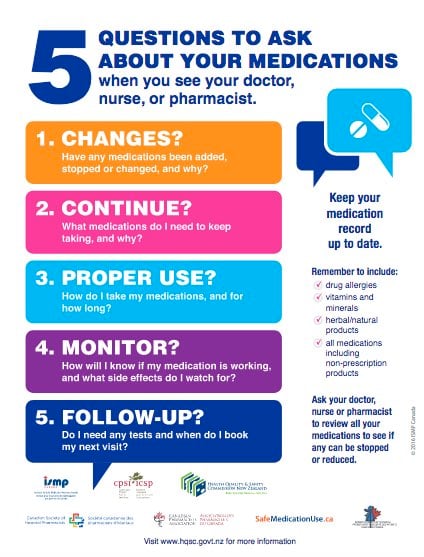Fentanyl patch
This information is intended for use ONLY after you have been prescribed fentanyl patch.
Key points about fentanyl patch
- Fentanyl patches are used to relieve ongoing (chronic) cancer pain if you need strong pain relief.
- Fentanyl patches are not recommended for the treatment of short-term pain or for ongoing pain that's not related to cancer
- Find out how to apply it safely and possible side effects.

Fentanyl patches are used for severe, ongoing (chronic) pain from cancer that requires strong pain relief. Fentanyl belongs to a group of medicines called opioids. Opioids act on your brain and nervous system to reduce pain. Other examples include morphine and oxycodone. Read more about opioids and opioids in palliative care.
Fentanyl patches are slow-release. Each patch is applied onto your skin and lasts for 3 days (72 hours). During this time, fentanyl is slowly released through the skin into your body. Compared to quick-acting opioid medicines, fentanyl patches take longer to start working but last longer.
Before using fentanyl patches
Before taking or using fentanyl patches, you'll usually start on a low dose of another type of opioid, such as morphine tablets or capsules. This will be increased slowly until your pain is well controlled. Once your pain is under control, your healthcare provider may swap you to fentanyl patches. This will avoid you having to take tablets or capsules several times a day.
Fentanyl patches are not recommended for some types of pain
Fentanyl patches are NOT recommended for:
- the treatment of short-term (acute) pain
- ongoing pain that's not related to cancer.
It might appear to be helpful initially, but ongoing use of fentanyl patches can cause harmful side effects, including increasing your risk of accidents and falls. It can also make your pain worse. Fentanyl patches don't treat the underlying cause of the pain. Read more about chronic pain
If you've been using fentanyl patches regularly for a long time for pain not related to cancer, such as for osteoarthritis, work on a plan with your prescriber to lower your dose gradually. You could get withdrawal symptoms if you stop using this medicine suddenly. Read more about stopping fentanyl patches and lowering my dose of opioid medicine.
|
Label change for Fentanyl 12.5 mcg patch |
In Aotearoa New Zealand, fentanyl patches come in different strengths. The strength is based on how much fentanyl the patch releases per hour.
Strengths include 12 mcg/hour, 25 mcg/hour, 50 mcg/hour, 75 mcg/hour and 100 mcg/hour.
- The dose of fentanyl patch will be different for each person depending on how bad your pain is, how you've responded to other pain medicines and if you get side effects from fentanyl.
- Some people may need to wear more than 1 patch to get the right dose for their pain relief.
- You will need to remove your patch and replace it with a new patch every 3 days.
The first patch you use may take up to a day to take effect after it's applied to your skin. This is because fentanyl is slowly absorbed through your skin into your bloodstream.
Similarly, the patch may keep working for a few hours after it's been removed. That's because some of the medicine is still being slowly absorbed into your blood.
Never cut the patches or use damaged patches as this could result in an overdose.
Change your patch every 3 days (72 hours)
Wear the fentanyl patch for 72 hours (3 days), then you'll need to replace it with a new one. When you change your patch, try to do it at the same time of day each time. When you stick on your patch make a note of the date and time. so you'll know when to remove it and replace it with a new one. You could write this on your calendar or use a phone app or smart speaker to record the time.
- If you forget to change your patch: Change it as soon as you remember and make a note of the day and time. Then change the patch again after 3 days as usual.
- If you're very late changing your patch, don't apply a new patch without talking to your healthcare provider first.
- Always remove the old patch before applying a new one.
- If you often forget to change patches, it may help to set an alarm to remind you. You could also ask your pharmacist for advice on other ways to help you remember to take your medicines.
Sticking on your patch
- Placement of the patch: The best place to apply fentanyl patches is on the upper part of your body such as your arm or chest. Don't put the patch on your waistline where tight clothes may rub it. Avoid putting the patch on areas where the skin is hairy, irritated or inflamed (red) or on skin folds.
- Before applying the patch: Remove the old patch before applying a new patch. Make sure your skin is clean and dry. Don't apply the patch to oily, broken or irritated skin. Avoid lotions or perfumes on areas where you stick your patch as it may stop the patch from sticking properly.
- When applying the new patch: Press the patch firmly in place for about 30 seconds. Make sure the patch sticks well, especially around the edges. Don't put the patch on the same area of skin for the next few times.
- If your patch falls off: If a patch falls off before the 3 days are up, put another patch on a different part of your body and discard the old patch. Make a note of the day and time. Then change the patch again after 3 days as usual.
- If the patch doesn't stick properly: You can apply first aid tape around the edges of the patch to hold it in place. Alternatively, a transparent dressing can be placed over the patch. It's important that the patch is clearly visible at all times, so don't fully cover it with any bandage or tape.
Showers and swimming
The patches are waterproof, so you can have baths, showers and go swimming while wearing the patch. Check the patch is still on properly afterwards and dry the area around the patch. Avoid soaking in a hot bath and don't apply the patch immediately after a hot bath or shower. Allow your skin to cool down first.
Don't expose your patch to strong heat or sunlight
- Don't expose the patch to direct heat from electric blankets, heat pads, heated water beds, heat or tanning lamps, intensive sunbathing, hot water bottles, long hot baths, saunas or hot spa baths. Direct heat may cause an increase in the amount of fentanyl absorbed by the skin.
If you're having an MRI scan
- Some procedures such as an MRI scan may overheat the patch and burn your skin. Talk to your healthcare provider before your procedure.
Dispose of the patch safely
Patches can keep releasing medicine after the usual duration of use. To avoid overdose make sure you remove your old patches when a new one is put on. When you remove a patch, fold it in half so that it sticks to itself, before throwing it away.
It's important to store and dispose of medicine patches out of the reach of children or pets. To a child, medicine patches look like stickers or bandages. There are many reports of children finding patches and sticking them on their body. Children and pets can also chew, suck, or swallow patches.
If you discover a patch is missing from your body, stop everything. Find it before your child or pet does.
Read more about the safe use of medicine patches.
Here are some things to know when you're using fentanyl patch. Other things may be important as well, so ask your healthcare provider what you should know about.
Eat plenty of fibre and drink more water
- Fentanyl can affect your bowel movements – it might be hard or painful to poo (constipation).
- If this happens, ask your healthcare provider for a laxative, to soften your poo.
- Eating foods with fibre, drinking plenty of water and keeping active can help.
Fentanyl can make you sleepy, drowsy, dizzy or affect your concentration
- If you’re excessively drowsy or sleepy, ask your healthcare provider for advice. You may need a lower dose.
- Limit or avoid alcohol as it can make these effects worse.
- Don’t drive a vehicle, ride a bike or operate machinery (including power tools) and don’t make important personal or business decisions or sign legal papers.
Taking other medicines
- Your healthcare provider may recommend taking other pain relievers such as paracetamol and NSAIDs (ibuprofen, diclofenac, naproxen) as well.
- If you're taking any other medicines, or starting a new medicine, check with your prescriber or pharmacist to make sure they're safe to take with fentanyl. This includes any medicines you buy without a prescription (over the counter), such as herbal and complementary medicines or recreational drugs.
- If your pain isn’t improving, don’t apply extra patches. If you’re also prescribed paracetamol or anti-inflammatories, you can use them with fentanyl. If you're not sure, ask your healthcare provider.
- Try other ways to manage your pain. Fentanyl reduces severe pain but won’t take all of your pain away. Try relaxation techniques, gentle exercises and stretches.
If you use fentanyl for a long time your body can become used to it. This is not usually a problem for people who are using it for pain caused by cancer.
However, if you're using it long-term for pain that's not related to cancer, fentanyl is unlikely to work well. At the start it helps, but as time goes by it stops working, which can make you feel like you need more. Sometimes opioids can actually cause your pain to get worse. This is called 'opioid-induced hyperalgesia'. The chance of side effects, and dependence, increases with time.
If you've been using fentanyl patches for a long time, you could get withdrawal symptoms if you stop using it suddenly. Examples of withdrawal symptoms are feeling anxious, shaky or agitated and sweating a lot. If you want to stop using fentanyl, talk to your healthcare provider first. They will reduce your dose gradually over several weeks or months so you don't get withdrawal symptoms.
Like all medicines, fentanyl patches can cause side effects, although not everyone gets them. Often side effects improve as your body gets used to the new medicine.
| Side effects | What should I do? |
|---|---|
|
|
|
|
|
|
|
|
|
|
Read more about medicines and side effects and reporting a reaction you think might be a side effect.
Fentanyl patch(external link) New Zealand Formulary Patient Information
Brochures
Medicines and side effects [PDF, 91 KB] Healthify He Puna Waiora, NZ, 2024
Fentanyl Sandoz patch(external link) Canterbury Regional Cancer and Haematology Service, NZ, 2021
5 questions to ask about your medications(external link) Health Quality and Safety Commission, NZ English(external link), te reo Māori(external link)
Understanding morphine and other opioid medicines(external link) Palliative Outcome Initiative English(external link), Korean(external link), Samoan(external link), Simplified Chinese(external link), Tongan(external link)
Risks of opioid medicines(external link) Medsafe, NZ
Managing pain and opioid medicines(external link) NPS MedicineWise & Choosing Wisely Australia
Fentanyl patch label change(external link) Pharmac, NZ, 2025
References
- Fentanyl (analgesia) (external link)New Zealand Formulary
Brochures

Medicines and side effects
Healthify He Puna Waiora, NZ, 2024

Health Quality and Safety Commission, NZ, 2019 English, te reo Māori
Credits: Sandra Ponen, Pharmacist, Healthify He Puna Waiora. Healthify is brought to you by Health Navigator Charitable Trust.
Reviewed by: Angela Lambie, Pharmacist, Auckland
Last reviewed:





